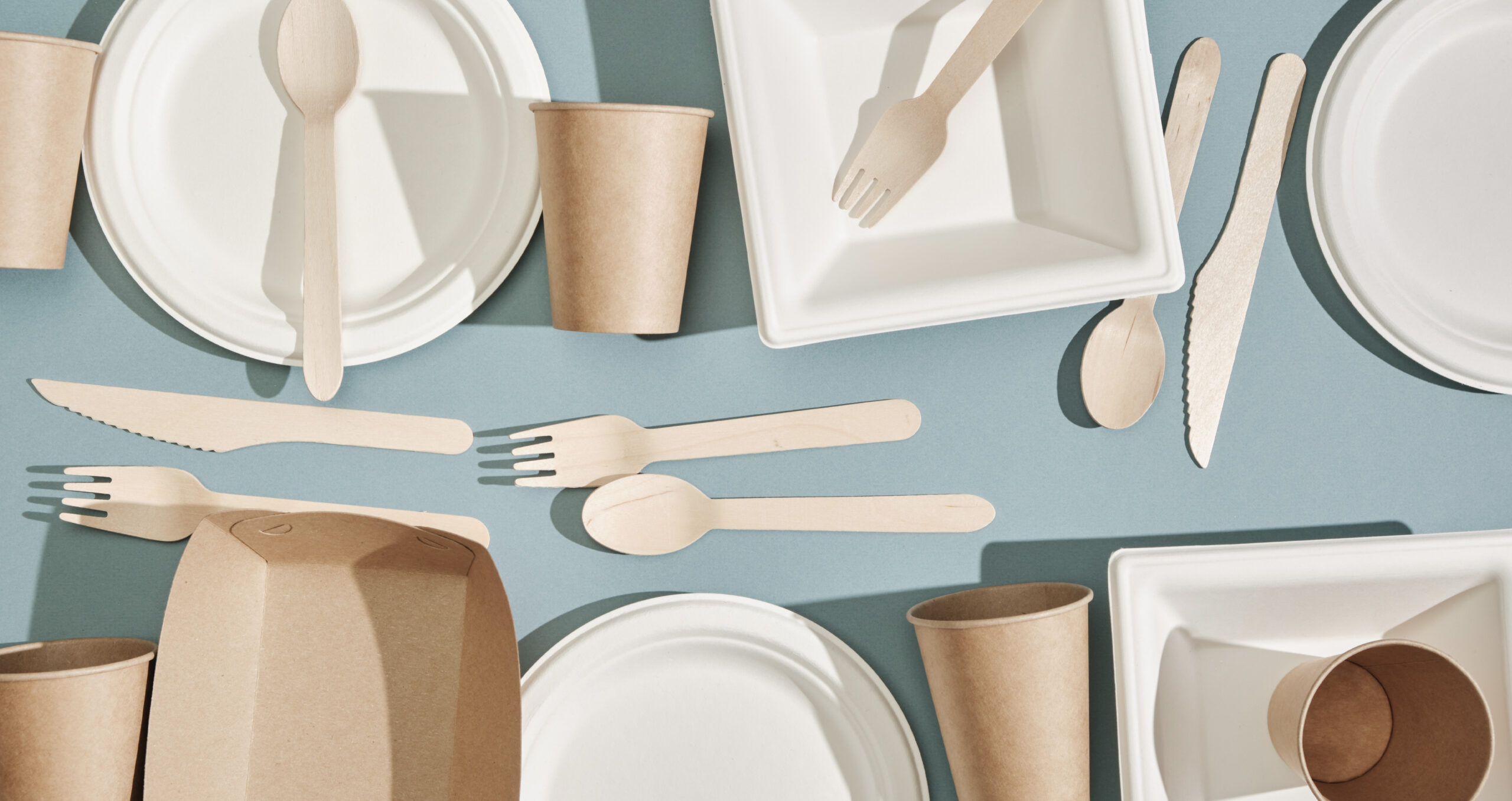
Research casts doubt on the biodegradability claims of bioplastics

A new study suggests that final products should be tested under real-world conditions
A study on the rates at which bioplastic products degrade in different environments has found that these tend to fall short of companies’ claims about single-use items.
Environmental think-tank 5 Gyres has published research observing the degradation of 22 different bioplastic products labelled as being either compostable or biodegradable, such as forks and film coatings, that are currently on the market. The items were observed in both terrestrial and marine environments in California, Florida and Maine, in the US.
Researchers monitored the fragmentation rate of the products to verify their manufacturers’ marketing claims. They found that even after 64 weeks, many of the items were still recognisable, with thicker items such as cutlery and pens being the most intact.
According to the US’s standard for the labelling of compostable plastics, to be certified as compostable at industrial facilities, at least 90 per cent of a product must break down by biological action within six months, and at least 90 per cent of the product must physically disintegrate within 12 weeks.
Meanwhile, for a product to be certified home compostable, at least 90 per cent must break down by biological action within 12 months, with at least 90 per cent physically disintegrating within 26 weeks. These conditions are also mirrored by the EU’s industry standard for the bioplastic industry.
“Something might be technically biodegradable, but that doesn’t mean that it necessarily breaks down in the environment,” said Lisa Erdle, director of science and innovation at 5 Gyres. “There are so many claims on biodegradation and composting [in the bioplastics industry]. What we wanted to do is take real products and packaging and test them in real environments.”
Bioplastic types
Bioplastic products are made from any renewable biomass source, and may or may not be either biodegradable or compostable. 5 Gyres says that most bioplastics claim to be either biodegradable, meaning that microorganisms consume the organic material, or compostable, which is a specific method of degradation where biomass is transformed into compost.
The bioplastics used in the study were of different types including polylactic acids, or PLAs, which are typically used in food packaging, and polyhydroxyalkanoates, or PHAs, which have medical applications such as in sutures and implants. They were also tested against products made from natural fibres such as bamboo and paper. A bamboo fork, one of the tested items, remained similarly intact in terrestrial environments to bioplastic items.
“These novel polymers, like PHAs, are produced from the sugars from fermenting microbes. These polymers aren’t naturally occurring in the environment, just as a bamboo fork doesn’t naturally occur in the environment,” Erdle said.
The study also shows that once bioplastics are mixed with other materials, such as coatings or other chemical additives, that can negatively affect their biodegradability. Erdle explained that most bioplastics undergo testing in lab conditions and therefore the final consumer product, which may have had other chemicals added to it, is never actually tested.
“In the lab, there’s often a very narrow set of conditions. So you don’t always get a picture of what happens if it were to enter a dry terrestrial environment or a cool marine environment,” she said.
Better alternatives
Biome Bioplastics managing director Sally Morley told Sustainable Views that a “growing number of approved laboratories” offer testing for bioplastics. However, bioplastics have been heavily criticised by environmentalists, who say that they are a distraction from the need to reduce our use of single-use items and packaging regardless of what they are made from.
“It’s important that bioplastics don’t distract from the overall goals that we need zero-waste solutions,” Erdle said, adding that bioplastics could act as a “stop gap on the way to reusable materials”.
Morley said that bioplastics could be a mitigating solution. “Consumers continue to demand ease of use and convenience, so single-use items satisfy this need. However, as consumers, we are also much more aware of the need for more sustainable packaging options,” she said.
“It’s actually relatively straightforward to substitute single-use plastic for bioplastic alternatives … The main difference is in processing temperatures, which are typically lower than those conventional polymers need. This offers savings in power usage.”
Erdle suggested that bioplastics should be used in situations where reusable alternatives are limited; for example, “wrapping for meats and cheeses”. “We’re not advocating for one-to-one replacements of all single-use plastics with bioplastics, but looking at where there are challenges for refill and reuse,” she added.
Regulatory change
The EU will vote on its Packaging and Packaging Waste Directive this week that aims to increase the use of sustainable packaging. European Bioplastics, the trade association that represents the industry, welcomed the revision of the directive in March this year that included the “requirement for packaging applications to be compostable in industrially controlled conditions”.
The European Commission will assess the possibility of proposing targets and sustainability criteria for bioplastics by the end of 2025, according to the directive.
Erdle said she hopes the results of the 5 Gyres study will be used to inform legislators and policymakers, both those involved in the certification of packaging and those that deal with waste management.
“Work on how these items break down in industrial composters and what happens with these items at their end of life, can inform packaging design and legislation around what companies are and aren’t allowed to use,” she says.
“They get into the environment because our waste management systems aren’t perfect … So we need to understand what happens to these items if they reach the natural environment.”
Similar Articles

SDGs remain off track and underfunded

Expanding UK ETS to cover heating and road transport fuels could cut domestic emissions by a quarter


